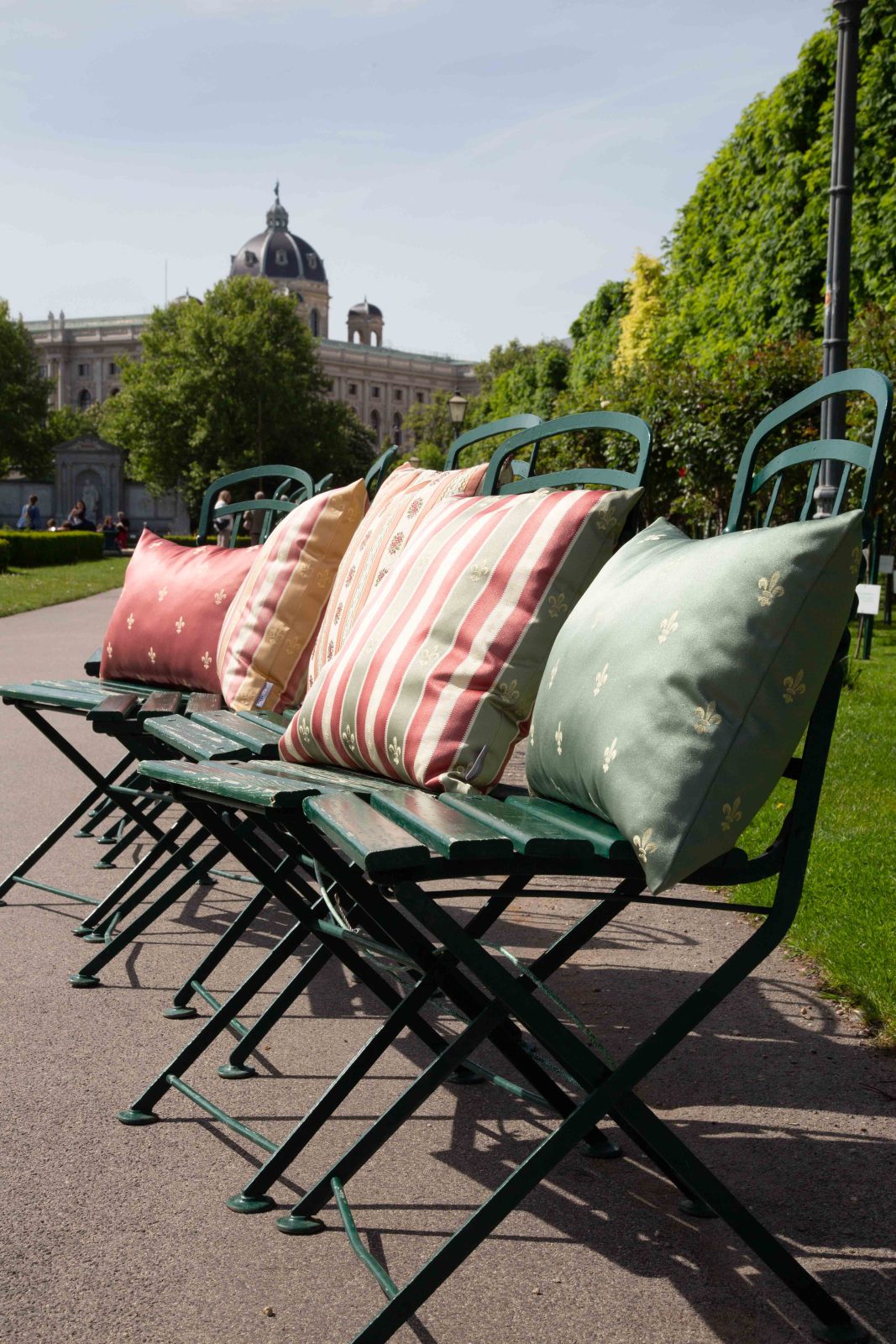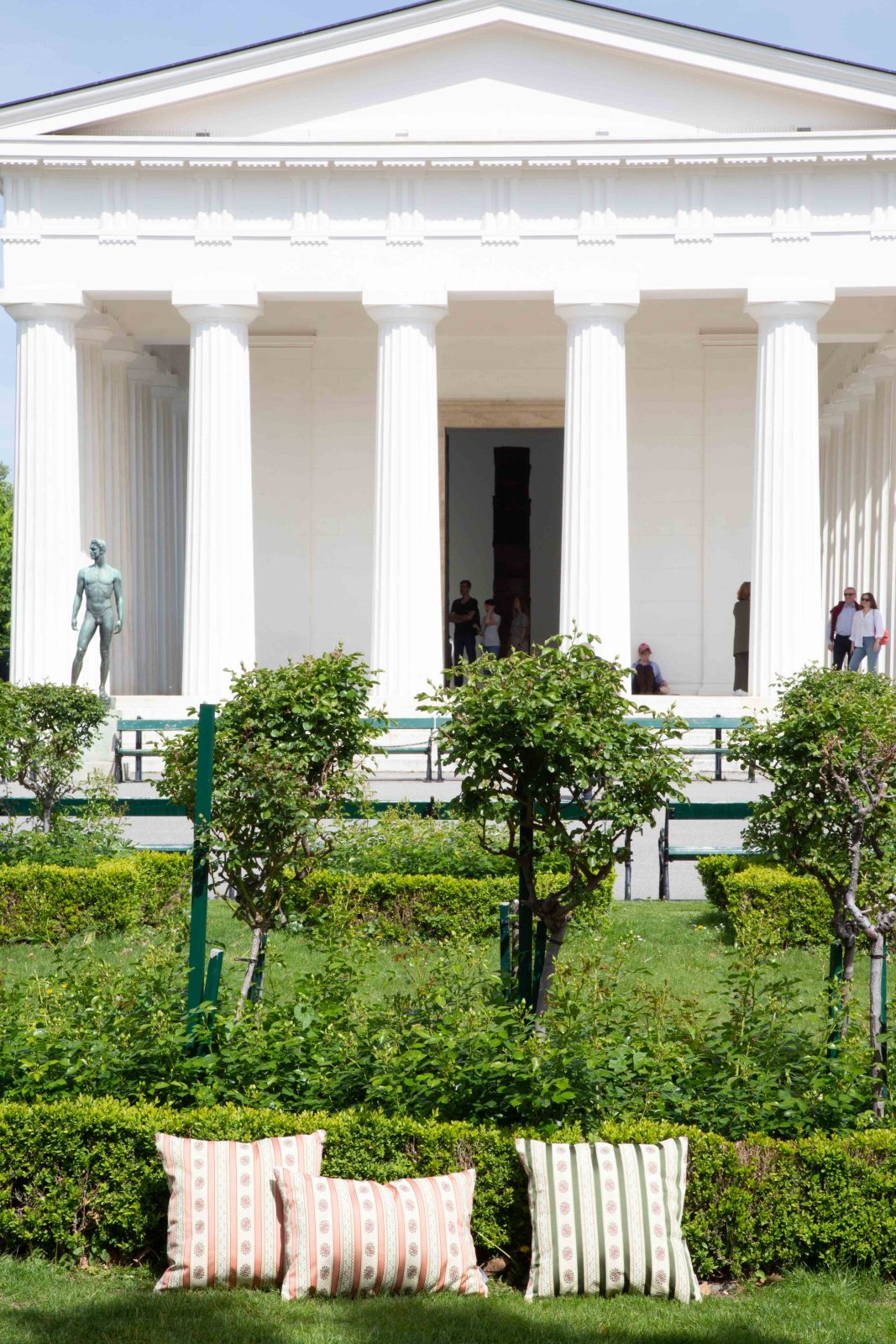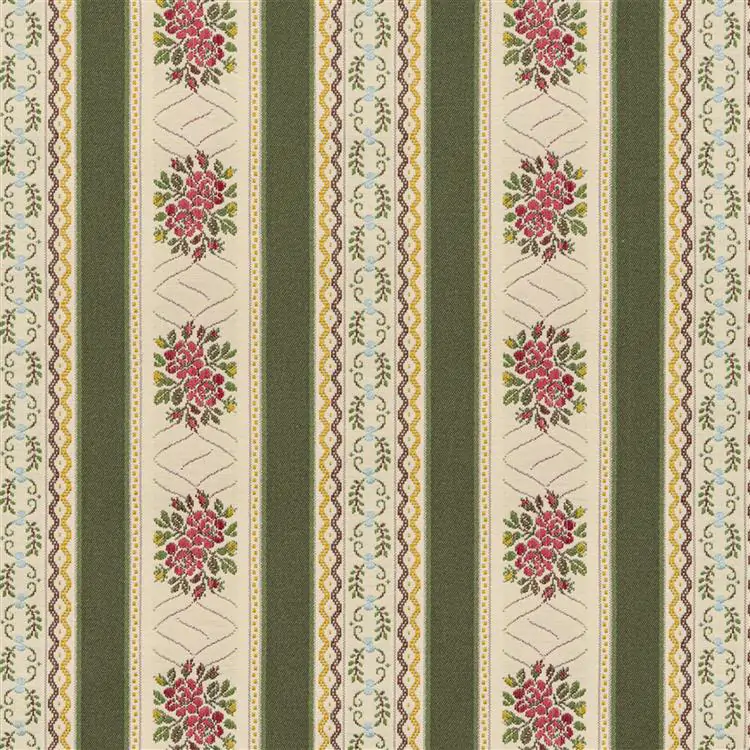

BIANCA
This time, let us embark on a textile connotation journey through the streets of Vienna, where this spring we took our fabrics to well-known places, unequivocally associated with classic elegance and prominence.
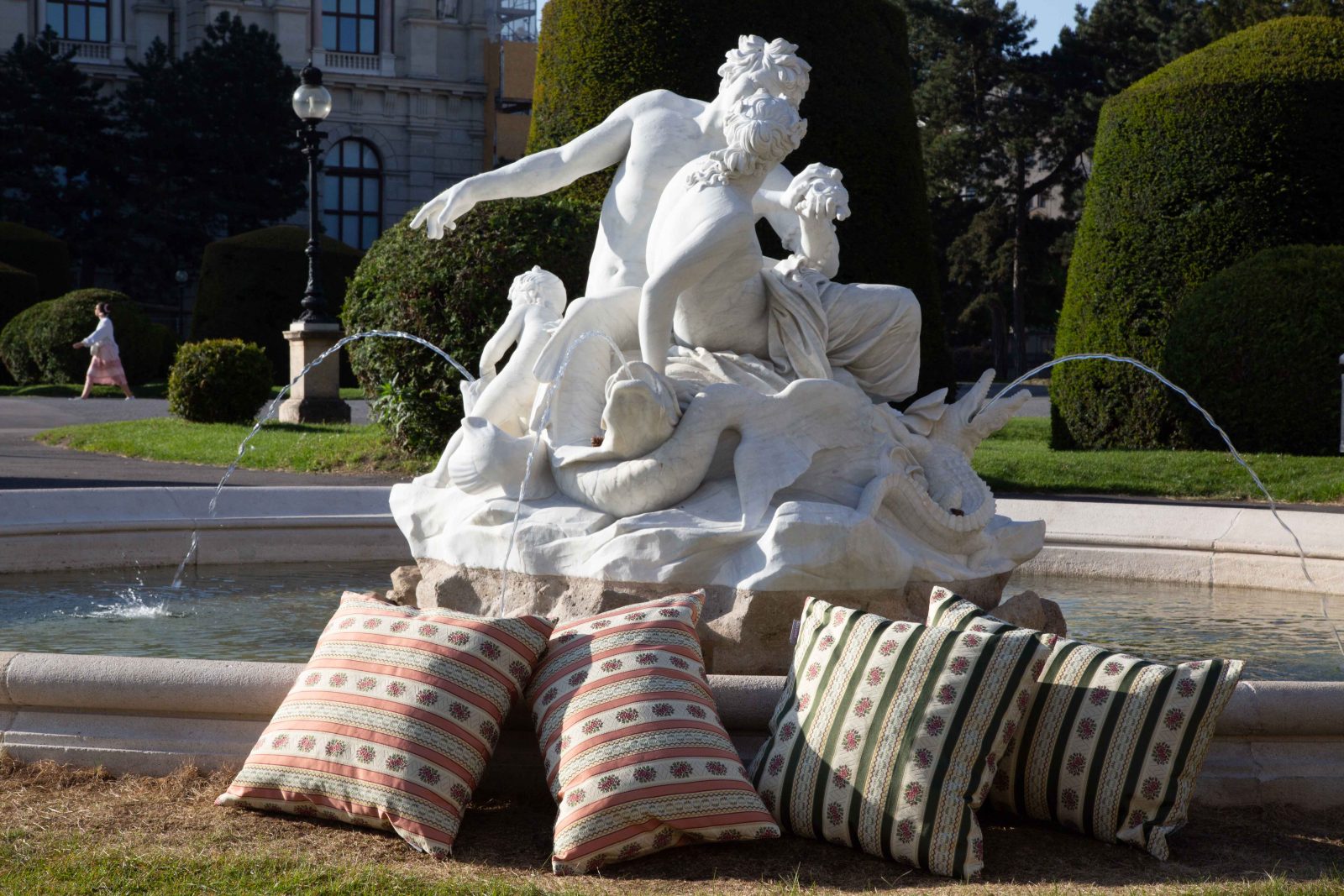
It would seem that there is nothing more trivial than a floral ornament or nothing more trite than the classic style. Meanwhile, floral patterns on classic fabrics boast quite a meandering history. It turns out that each period had its favourite species, stylisation methods and interpretations.
In Antiquity, flowers always accompanied genre scenes, creating garlands, festoons and medallions around figures of people and animals. Some of these decorative elements, albeit in a greatly simplified and modernised form, are still used today.
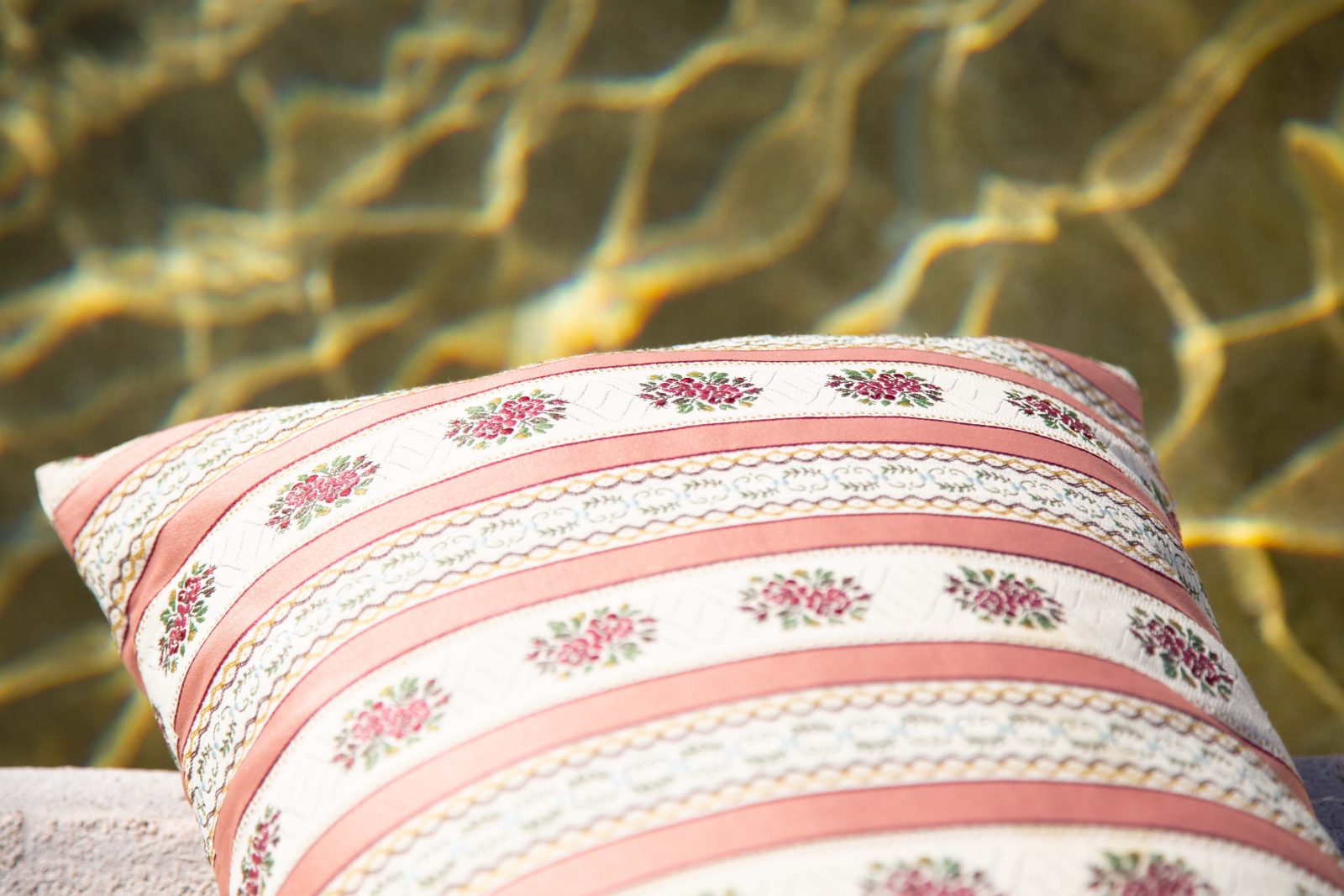
The 17th and 18th centuries saw a “bloom” (sic!) of floral patterns. Once flat, flowers became more spatial and their depictions were increasingly more accurate. The Jacquard loom, invented at the beginning of the 19th century, significantly contributed to this change, endowing patterns with three-dimensionality and allowing manufactures and designers to conduct weaving experiments using large-format and intricate floral patterns.
Rococo set the fashion for small fine flowers scattered throughout the fabric, with a dazzle of pastel colours displayed in buds, creepers, vines, lianas, garlands, ivies, wreaths and coronets.
Another great boom in floral patterns came with Art Nouveau, whose flowing, undulating lines, reminiscent of ancient meanders, coupled the decorative arts with floral ornaments forever.
This styling theme befitted fabrics particularly well and has remained popular until this day.
Today, all these periods represent an unimaginable wealth of iconic patterns used in decoration design.
The thing about good classics is that they never become stale and are always bound to have enthusiasts and imitators. Just like classic, well-designed cities, such as Vienna. This perfect urban space, with clean air, an enormous amount of park-like greenery, squares, fountains and good architecture showcasing solid materials and captivating forms, consistently attracts tourists and remains the best place to live for the locals.
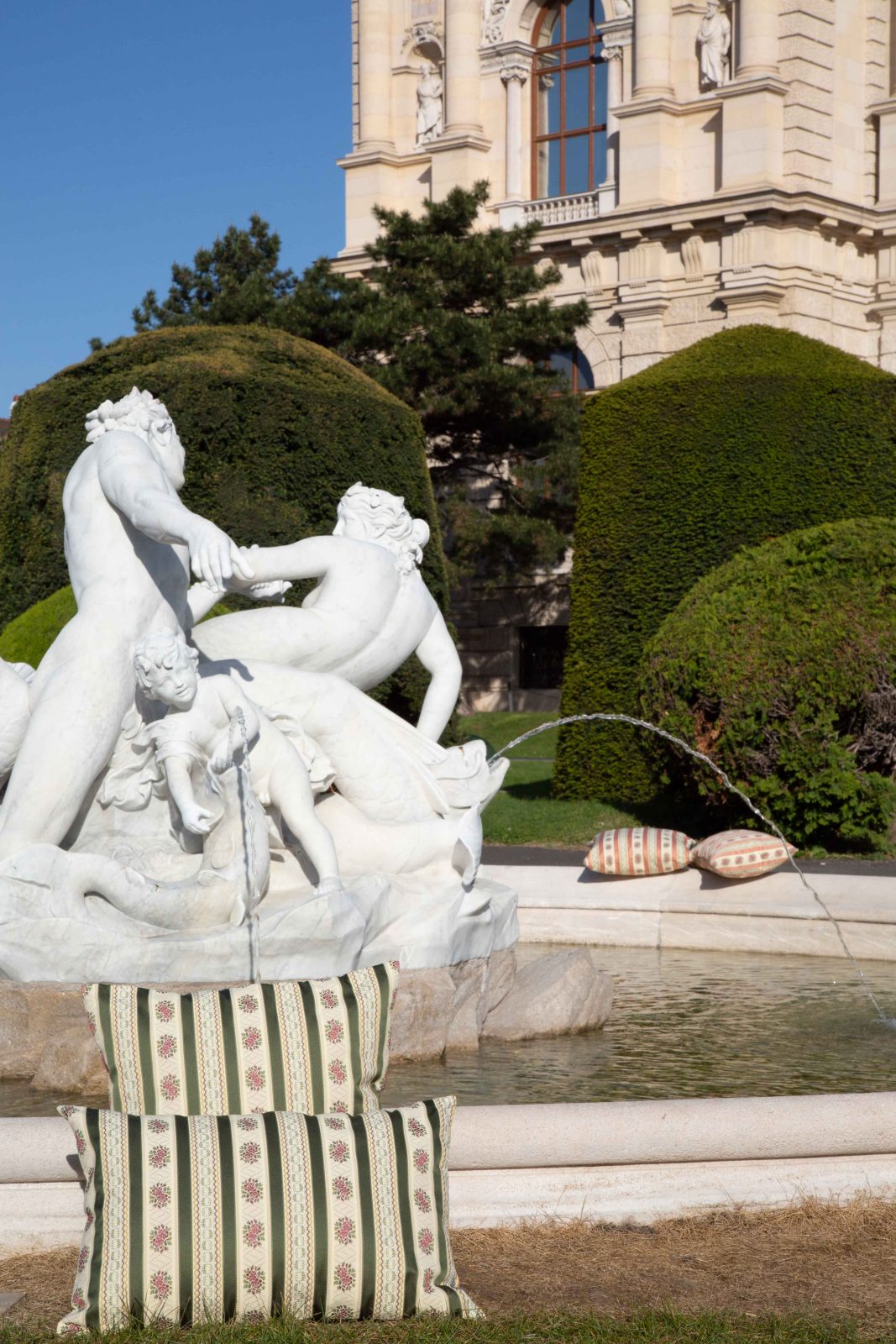
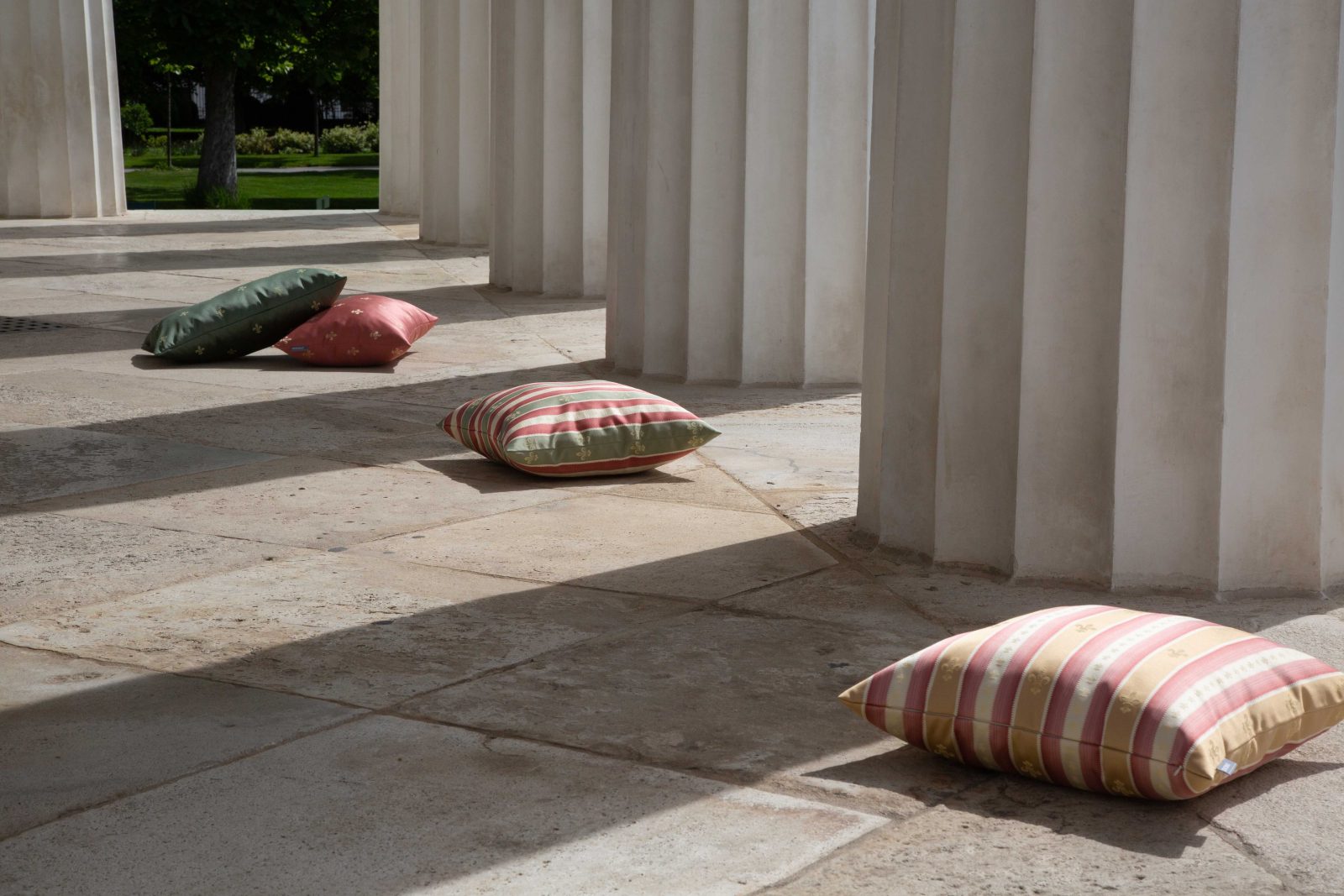
Plant or plant-stylised motifs rank high on the list of ornaments in the history of decorative arts. In most cases, their symbolism has hardly any romantic or strictly decorative connotations, but rather conveys a very strong message related to the history of a particular country, city or place. As such, ornamental symbolism is incorporated into the entire iconographic system, which serves to emphasise solemnity and eminence.
The heraldic lily (in French, fleur de lis, fleur de lys) figures prominently on this list. This is a plant motif in the shape of a lily flower, whose petals slightly bend down on the sides. The fleur de lys is not only a popular ornamental motif but also a symbol of the monarchy. There are also different variations of this pattern, derived from the coats of arms of royal families, such as the House of Bourbon or the Capetian House of Anjou.
Fabrics filling the interiors of special-purpose buildings in cities with strong monarchies were very often decorated with symbolic ornaments. Even now, textiles adorned with the fleur de lys motif, arranged in stripes or loosely scattered over a colourful pastel background, are used to furnish and adapt stylised, classic interiors, lending them a touch of palace-like solemnity and elegance.
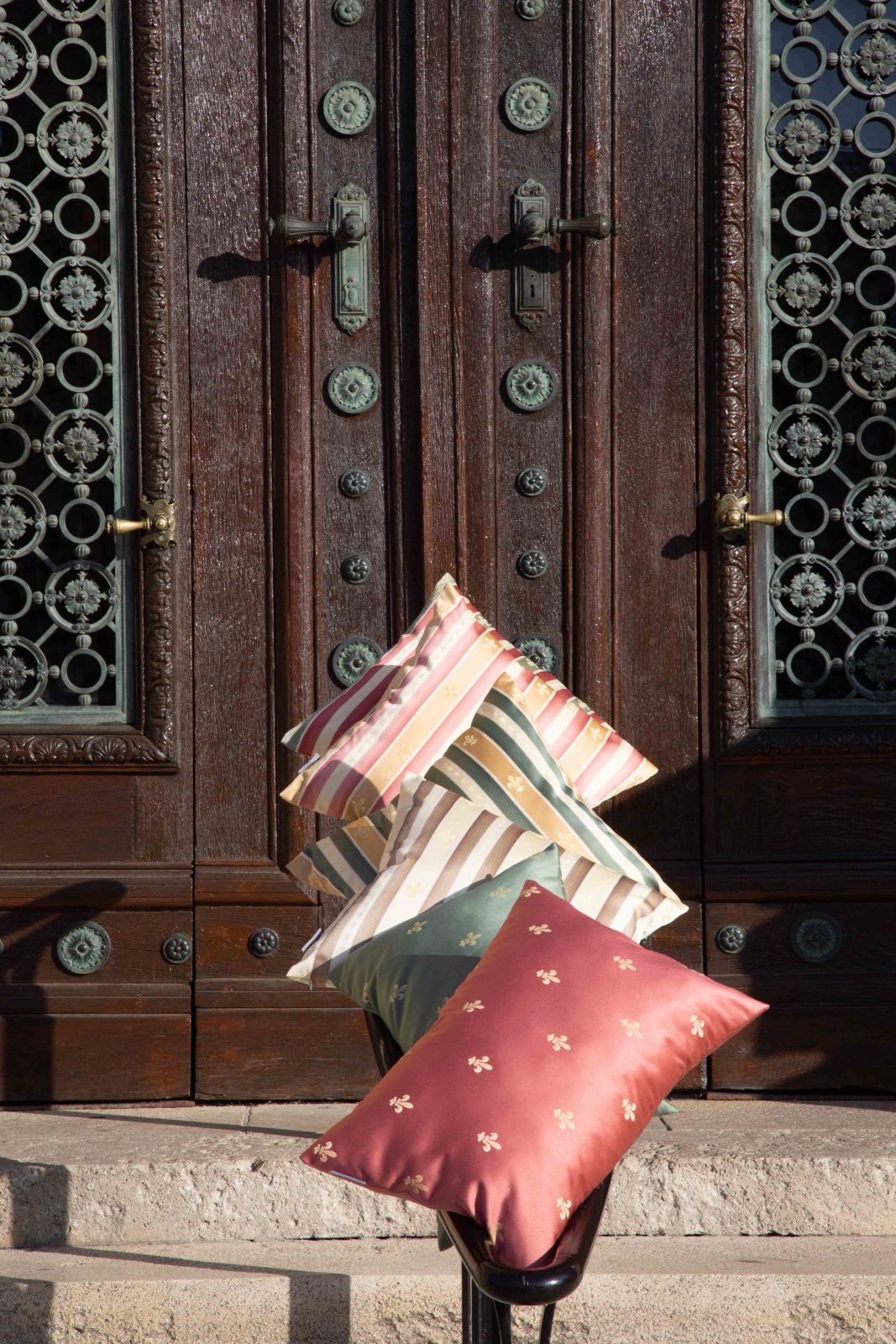
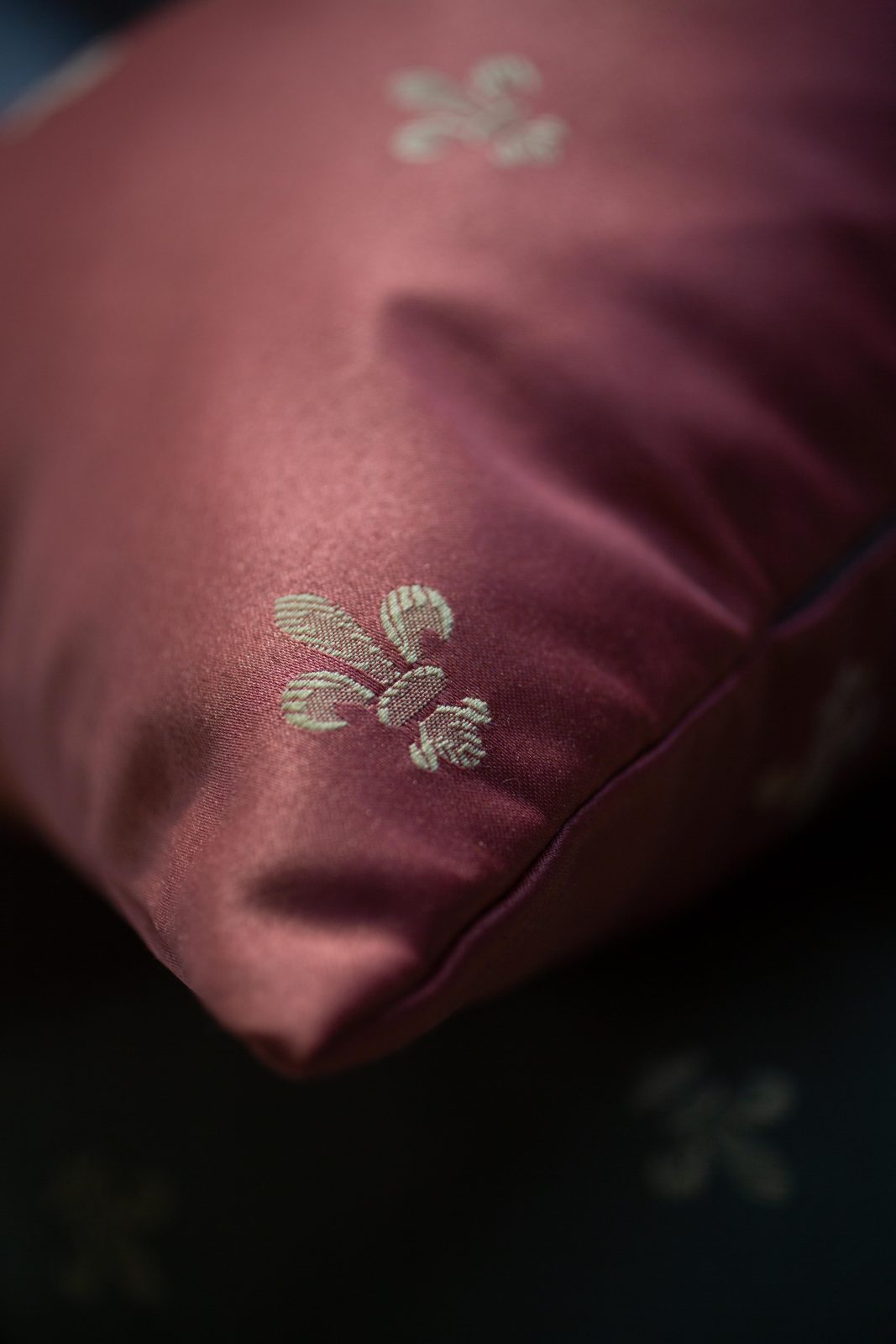
Viennese columned courtyards, balustrades, monumental sculptural figures or entry portals were perfectly suited as a historical backdrop for the motifs of the famous lily captured in satin fabrics.
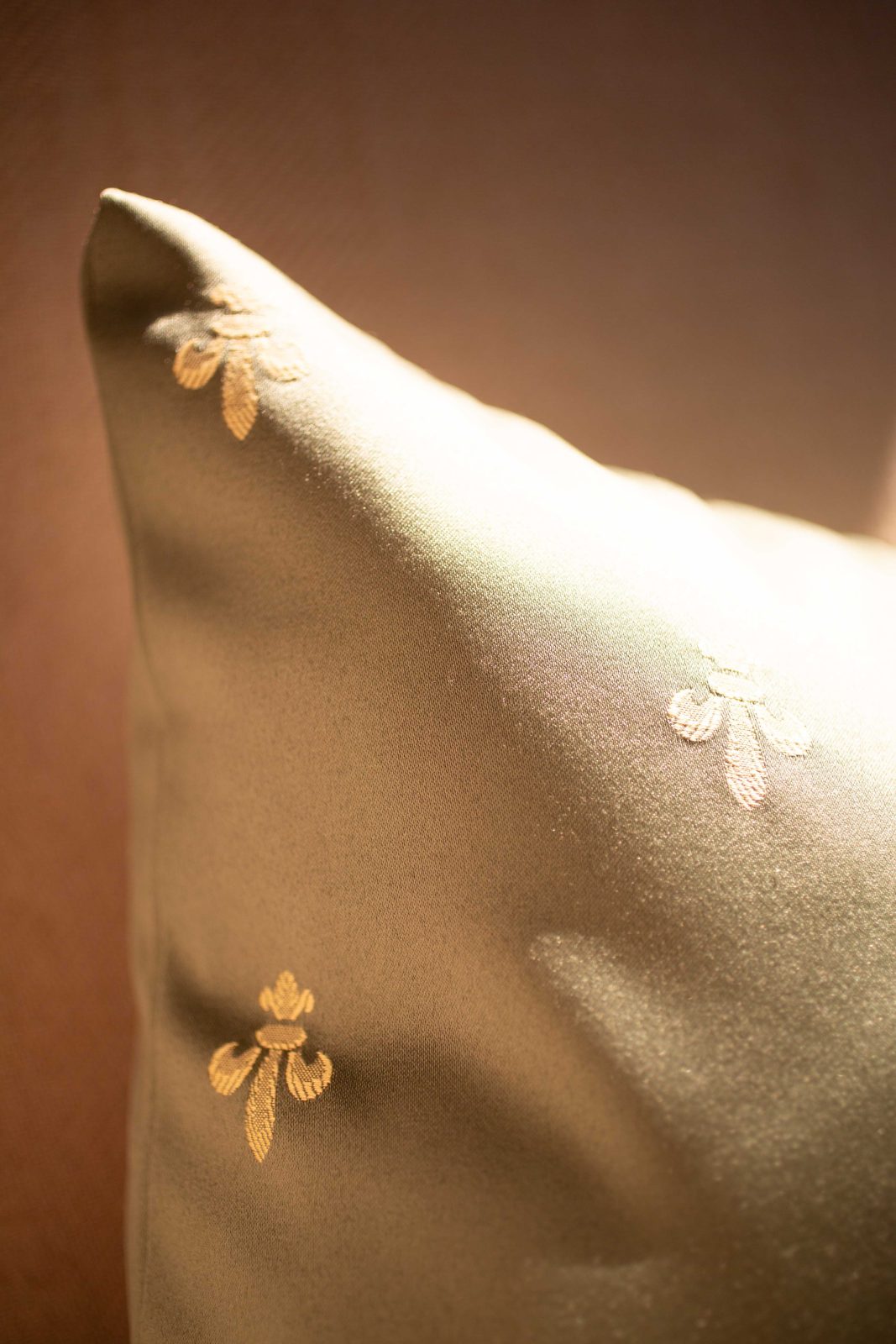

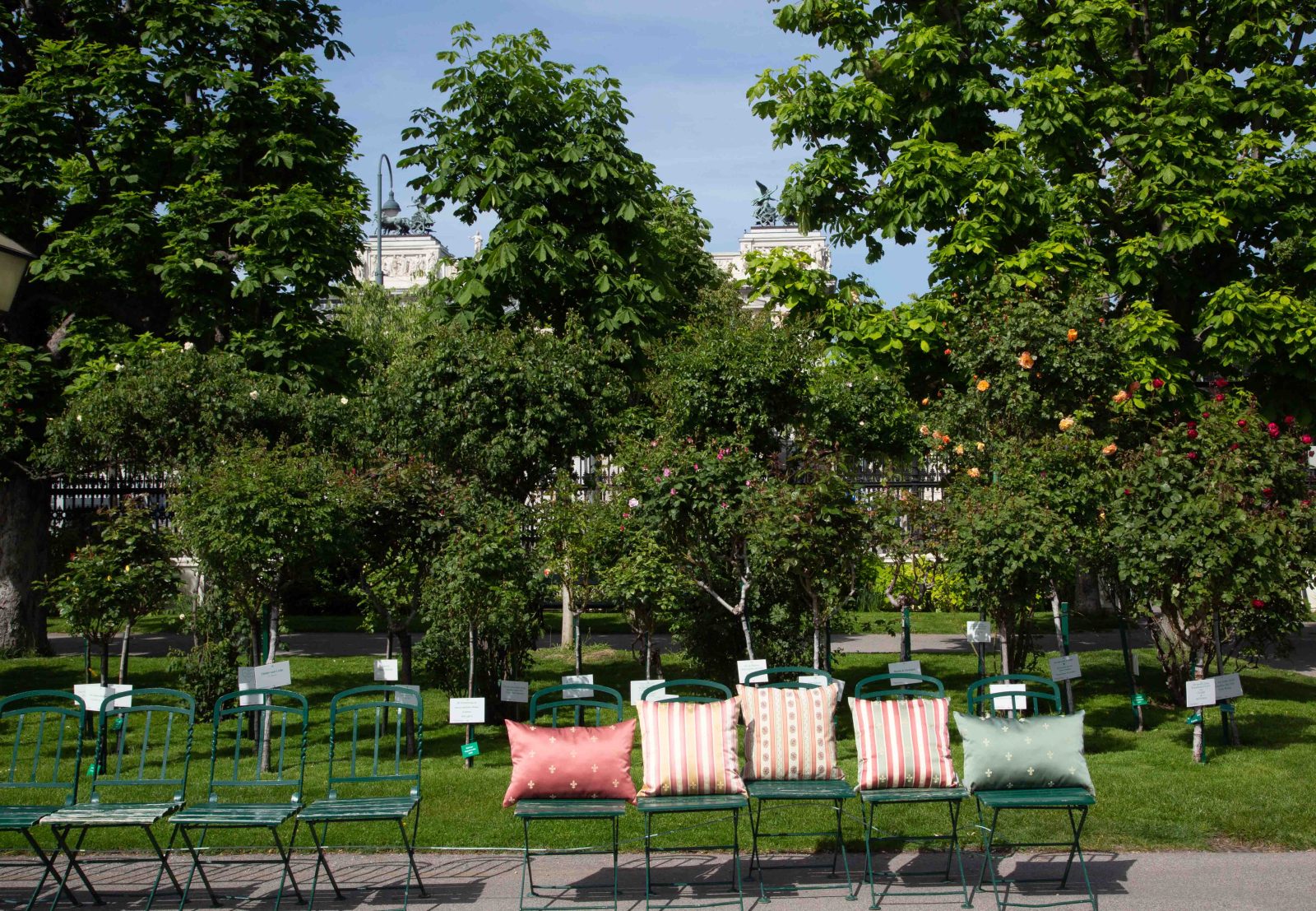
Contemporary fabrics employ an entire spectrum of floral patterns. The best-loved motifs still used in decorative and upholstery fabrics intended for Classicism-inspired interiors are floral ornaments inscribed in geometric figures, modelled after Roman frescoes, sculptures and paintings, as well as ancient arabesques, grotesques, festoons or garlands, re-established and popularised in the Renaissance.
One of the most celebrated flowers in textile decorations are roses of different varieties.
Roses are the essence of elegance and sophistication.
The same is true of fabrics decorated with these ornamental flowers. Whether printed on various textiles or woven with different yarns, the motif of blooming roses never fails to be exquisite and highly decorative. These may be stylised branches covered in discreet rose buds, exuberant inflorescences in various stages of bloom, or rose garlands, bouquets and ditsy roses. All fabrics with a rose pattern emanate the same charming romanticism that goes so well with interiors.
They are well-suited for both classic interiors and Vienna’s urban park in the heart of the city, bathed in early summer sunshine. Jacquard rose patterns look equally well back-dropped by dozens varieties of blooming rose vines and on the grass, between geometrically trimmed shrubs in the museum squares.
